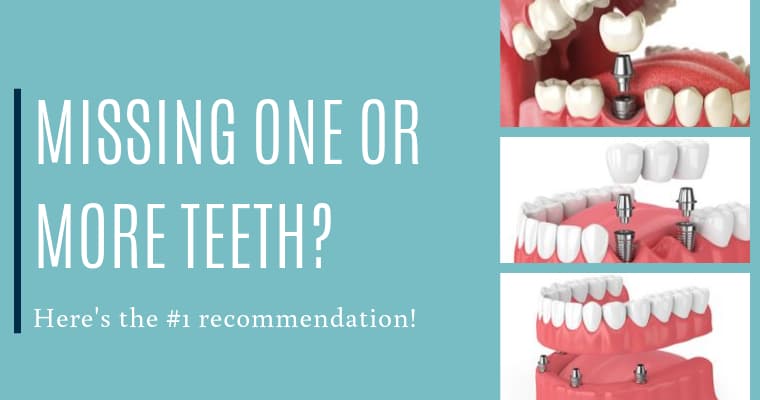Fascination About Dental Sense
Table of ContentsDental Sense Fundamentals ExplainedLittle Known Facts About Dental Sense.The Best Guide To Dental SenseOur Dental Sense Statements
are medical tools operatively implanted right into the jaw to recover a person's capacity to eat or their appearance. They give assistance for man-made (fake) teeth, such as crowns, bridges, or dentures. When a tooth is lost as a result of injury or illness, a person can experience difficulties such as fast bone loss, faulty speech, or changes to eating patterns that result in pain.Dental dental implant systems consist of an oral implant body and dental implant abutment and may additionally include an abutment addiction screw. Root canal procedure. The oral implant body is surgically inserted in the jawbone instead of the tooth's root. The dental implant abutment is usually connected to the implant body by the joint addiction screw and prolongs via periodontals right into the mouth to support the connected artificial teeth
(https://slides.com/dentalsense1)Framework of The Dental Implant System choosing oral implants, speak with your dental service provider regarding the potential advantages and threats, and whether you are a prospect for the procedure. Things to take into consideration: Your total health and wellness is an essential element in determining whether you are an excellent candidate for dental implants, how much time it will require to heal, and the length of time the dental implant may remain in location.
Smoking might impact the healing process and reduce the long-term success of the dental implant. The healing procedure for the implant body may take numerous months or longer, during which time you generally have a temporary joint instead of the tooth. the oral implant procedure: Meticulously follow the oral hygiene guidelines offered to you by your oral provider.
8 Easy Facts About Dental Sense Explained
Implant failing can result in the requirement for another procedure to deal with or replace the implant system. Brings back the ability to eat Recovers cosmetic look Helps keep the jawbone from reducing due to bone loss Preserves the health and wellness of the surrounding bone and gums Assists maintain adjacent (close-by) teeth stable Enhances lifestyle Damages to surrounding all-natural teeth during implant positioning Injury to the surrounding tissues during surgical treatment, such as sinus opening Injury throughout surgery (for example, fracture of surrounding jawbone) Inadequate feature, such as really feeling like the teeth do not bite together normally A sensation that the tooth hangs or turning in position arising from a joint screw loosening up Implant body failing (looseness of the implant body) due to systemic infection, which may be more probable in people with unchecked diabetics issues due to local infection in bone and gum tissues supporting the dental implant body because of delayed recovery, which may be more likely in clients who smoke Trouble cleaning up the periodontals around the dental implant, causing poor oral health Without treatment gum illness Post-surgical numbness as a result of nerve impingement or damages Constantly notify health treatment service providers and imaging technicians that you have oral implants prior to any type of magnetic resonance imaging (MRI) or x-ray treatments.
FDA is not familiar with any kind of adverse events reported for MRI or x-ray procedures with dental implants. Oral implants systems are normally made of products that comply with worldwide consensus requirements of the International Organization for Standardization (ISO) or ASTM International. These standards have information of what makes a secure material.

An oral implant is a framework that changes a missing tooth. With screw-like tools, the surgeon inserts an implant right into the jawbone, and it works as a support for an artificial tooth, called a crown. A gadget called an abutment links the fabricated tooth to the oral implant. The crown is custom-made to fit the person's mouth and match the color of their teeth.
Rumored Buzz on Dental Sense
Some people are not qualified for oral implant surgical treatment. It is for dental cosmetic surgeons to operate on people with: acute illnessuncontrollable metabolic diseasebone or soft cells condition or infectionIf these problems are solved, a person can have the surgery. In, oral specialists avoid operating on individuals with: If people with any of the above undertake dental implant surgery, there is a greater danger of the dental implant failing.

Oral dental implant surgical procedure is a personalized process. It's not the exact same for everybody. The complying with gives a basic introduction of what you can anticipate your dental practitioner, dental doctor, periodontist or prosthodontist to do: Position the dental implant operatively. Provide you time to heal. Attach the message and final crown, bridge or denture.
Next off, your doctor will very carefully put the dental implant right into your jaw. If your implant is near the front of your mouth, your dentist will certainly make a short-term tooth for you to put on up until you heal.
Dental Sense for Beginners
Your supplier can tell you what check this site out to anticipate in your circumstance. Throughout the healing phase, your jawbone needs to fuse to the dental implant. This process, called osseointegration, is crucial for security and lasting success. This process can take anywhere from three to 9 months. In many cases, it may take much longer.
Once your dental implant heals, your dentist can attach the joint (tiny connector message) and your last reconstruction (crown, bridge or denture). This usually takes regarding one hour to finish and might require a second minor surgical treatment. You should not really feel any pain during your dental implant treatment due to the fact that your service provider will make use of drug to numb your gum tissues.